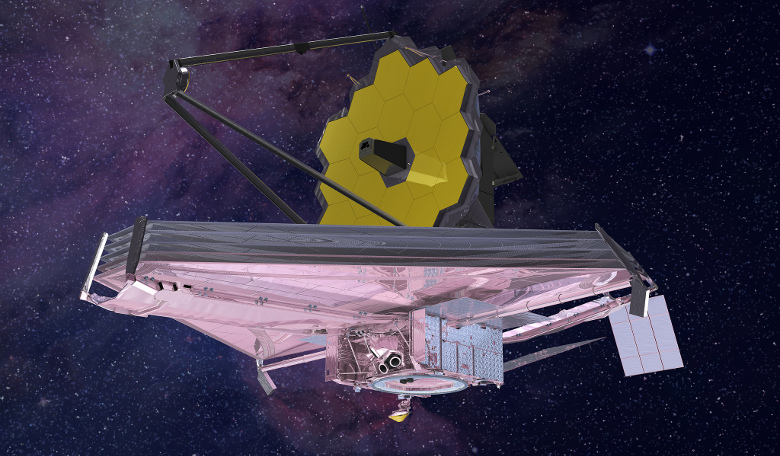The world’s most powerful space telescope and the successor to NASA's famed Hubble Space Telescope, the James Webb Space Telescope (JWST) has had its launch date delayed again, this time until approximately May 2020.
The JWST has been in the making since 1996 when the preliminary design work first began. With an envisaged price-tag of around $500 million and a launch date projected for 2007, no doubt the whole package looked a very attractive one indeed. However, fast forward to 2017 and the Webb telescope is still Earth-bound. Nonetheless, given the size and complexity of the observatory, it would be naive to expect the process to be completely problem-free.
It goes without saying that JWST is huge (and heavy); it is made up of three elements; the Integrated Science Instrument Module (ISIM), the Optical Telescope Element (OTE) - the eye of the telescope which includes a 6.5 metre diameter primary mirror (Hubble’s is 2.4 metres) made up of 18 hexagonal segments – and the Spacecraft Element. The spacecraft element consists of the spacecraft bus which includes the support functions for the operation of the Observatory, such as propulsion and communications and tucked in with it is the sunshield.
Designed by Northrop Grumman, the spacecraft’s five-layered sunshield, which acts like a giant parasol, is the size of a tennis court. Made from a material known as Kapton, the polyamide film has a high heat-resistance and is designed to protect the telescope from external sources of light and heat (like the Sun, Earth, and Moon) as well as from heat emitted by the observatory itself.
All pieces of the 6123 kilogram observatory are now together in the same Grumman facility for the first time and it is the integration of all of the components plus the testing that goes with it, that is holding up the launch.
“Webb is the highest priority project for the agency’s Science Mission Directorate, and the largest international space science project in U.S. history. All the observatory’s flight hardware is now complete, however, the issues brought to light with the spacecraft element are prompting us to take the necessary steps to refocus our efforts on the completion of this ambitious and complex observatory,” said acting NASA Administrator Robert Lightfoot.
Refocusing could be interpreted to mean extra spending, but the sky is not the limit when it comes to funding and NASA has now spent $7.3 billion of the $8 billion it was allocated by U.S Congress for the development of Webb. If the project goes beyond the $8 billion cost cap, the space telescope will have to be reauthorised by Congress and the potential for further delays increases.
But, do any missions lift off without a hitch? Let's not forget JWST’s predecessor, the Hubble Space Telescope. Hubble, which was the JWST of its time, was also beset by numerous technical delays and budget problems that resulted in its launch being delayed by several years before it eventually took to the skies. When it did finally reach orbit in 1990, returned images indicated a serious problem with the optical system and it was discovered that Hubble's main mirror had not been ground properly. It took a few years and a few servicing missions in space to eventually get it put right.
No doubt NASA will be looking to avoid any repeats of this nature with the JWST, by double and triple-checking everything that can be checked.
“Considering the investment NASA and our international partners have made, we want to proceed systematically through these last tests, with the additional time necessary, to be ready for a May 2020 launch,” said Thomas Zurbuchen, associate administrator for NASA’s Science Mission Directorate. "Simply put, we have one shot to get this right before going into space.”











